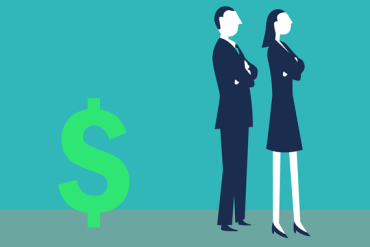The good news: Three-quarters of people who were eligible for the most generous financial subsidies on the federal health insurance exchange this year signed up for coverage, according to a new analysis by Avalere Health. The puzzler: Enrollment dropped off substantially for people with only slightly higher incomes who would also have qualified for significant subsidies.
Stiffer penalties for not having coverage and redoubled efforts to reach out and educate people about the health law and their obligations may be keys to increasing enrollment for people in these income groups, says Caroline Pearson, a senior vice president at Avalere Health.
 Subsidies alone aren’t enough, she says.
Subsidies alone aren’t enough, she says.
“The carrots as a standalone don’t work,” Pearson says, referring to subsidies that are available to make coverage more affordable for people with incomes between 100 and 400 percent of the federal poverty level. “You have to make people aware of the mandate, and as the mandate penalties increase that will strengthen the effect.”
Unless they qualify for an exemption, most people are required by the law to have health insurance or face fines. The penalty for not having health insurance in 2014 was the greater of $95 or 1 percent of annual income. This year, the penalty increases to $325 or 2 percent of income, and in 2016 rises to $695 or 2.5 percent of income.
Avalere based its analysis on the number of people who in 2013 would have been eligible to enroll on the federal marketplace that serves 37 states because they didn’t have group coverage or were uninsured and the number that bought a marketplace plan during the 2015 open enrollment period that ended in February.
While 76 percent of eligible people with incomes between 100 and 150 percent of the federal poverty level ($11,670 to $17,505 for an individual) enrolled in plans in 2014, only 41 percent of those whose income was between 151 and 200 percent of poverty ($17,622 to $23,340) signed up. In the next income bracket, eligible individuals with incomes between 201 and 250 percent of poverty ($23,457 to $29,175), just 30 percent enrolled coverage on the federal marketplace, the analysis found.
Only 2 percent of eligible people whose incomes were 400 percent of the poverty level ($46,680) or higher enrolled on the exchange, the Avalere analysis found. Since they were ineligible for subsidies, those individuals had little motivation to buy a plan through the exchange and may have bought coverage outside it.
Many of those with more modest incomes could have received significant subsidies on the exchange, including premium tax credits and cost sharing subsidies to reduce out-of-pocket costs such as deductibles and copayments.
For people with incomes between 151 and 200 percent of poverty, and to a lesser extent those in the next higher income bracket, “the financial incentive is still quite high and the benefit is high,” says Pearson. “That’s where education seems important.”
Please contact Kaiser Health News to send comments or ideas for future topics for the Insuring Your Health column.







